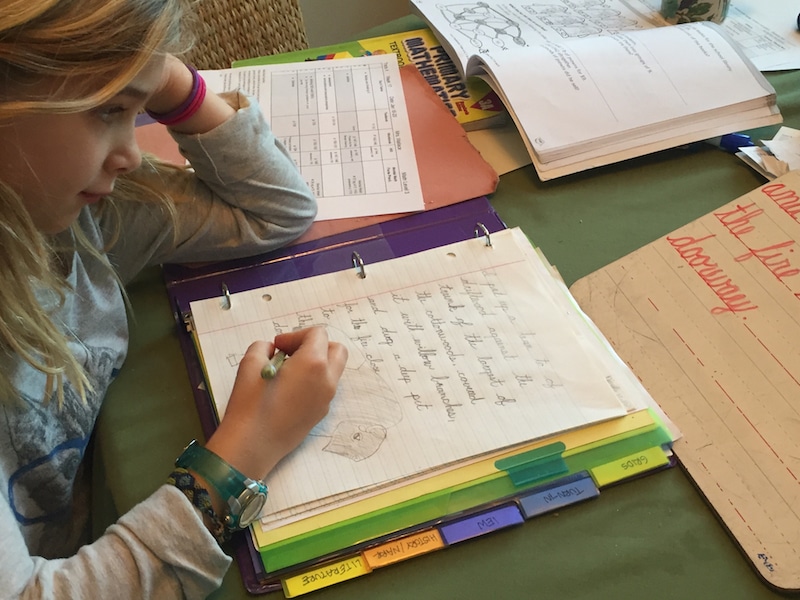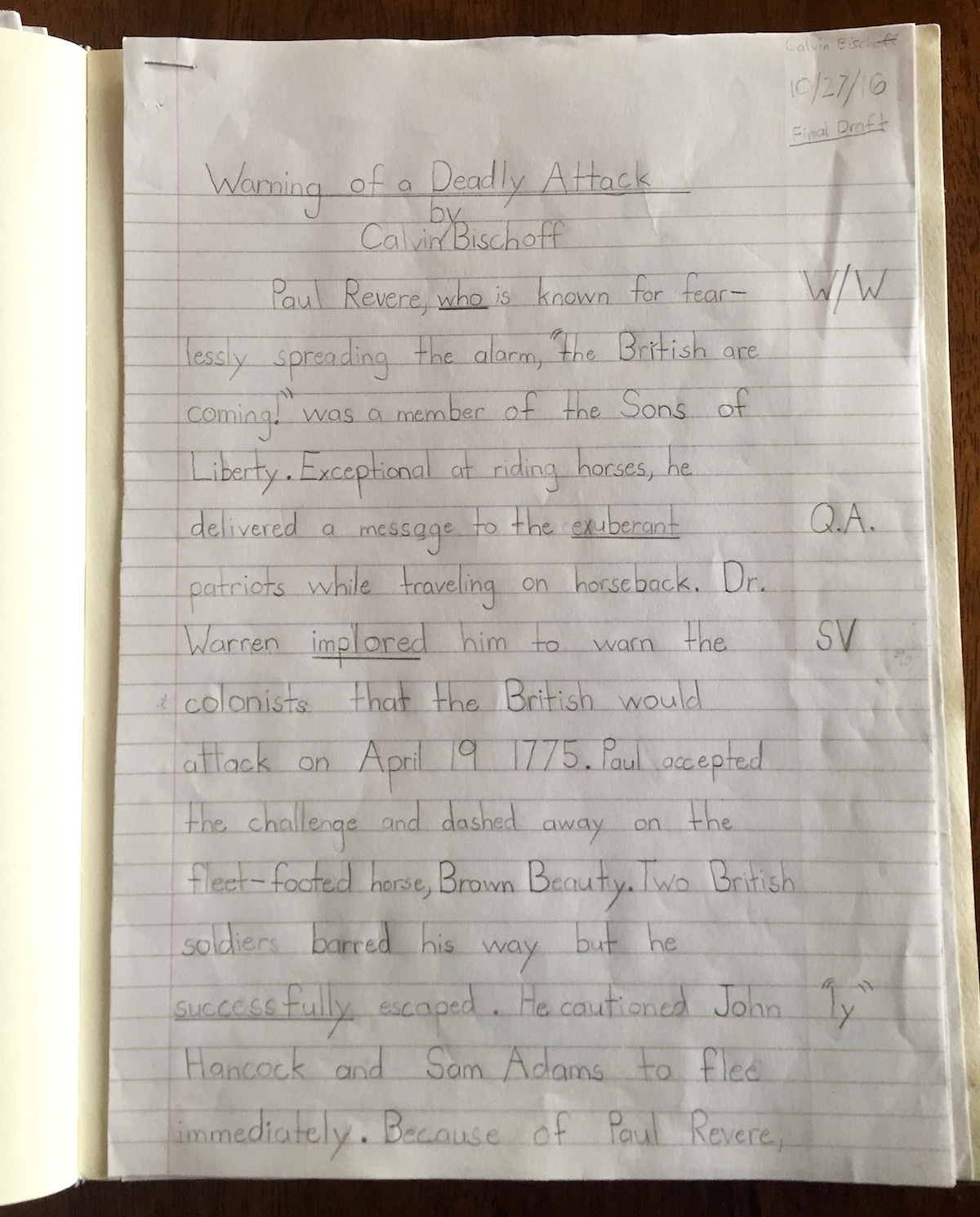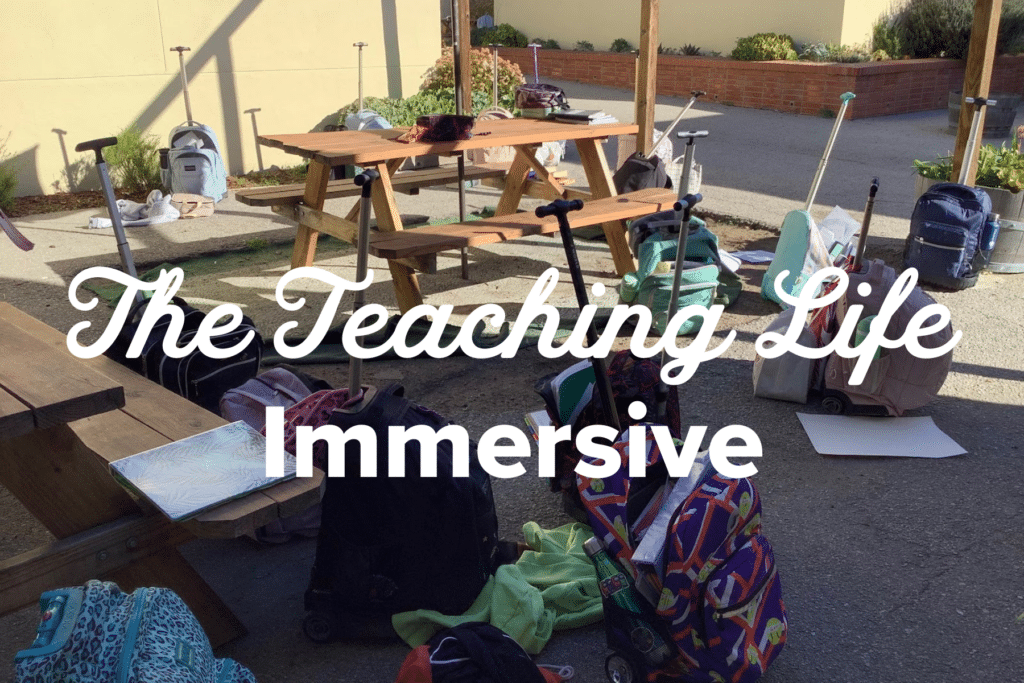
Today we bring you another installment in our Classical Education blog series. We’ve shared about the Rhetoric Stage and the Logic Stage, and now we turn our attention to SLOCA’s approach to the Grammar Stage, which comprises grades 1-4, or our Primary and Intermediate levels. Lisa Ann Dillon, our Intermediate Lead teacher, has a passion for this stage and shares the following helpful information and inspiration with us today!
We hope you are enjoying these posts and that they will be valuable resources to help you better understand each stage of our classical model as we do SLOCA life together, with our children and with each other, at every level.
“Remember, classical education teaches a child how to learn. The child who knows how to learn will grow into a well-rounded—and well-equipped—adult…”
~Jesse Wise and Susan Wise Bauer, The Well Trained Mind
The Grammar Stage is a magical time in the life of a child and it is the foundational phase of the classical trivium. Exploring the building blocks of each subject, students discover the underpinnings of their future learning. Committing facts and figures to memory may not seem so exciting to the adult mind, but for the young child this act facilitates students to ready their minds for the intake of more complex information as they mature. The emphasis at this stage is on Process not on Product. In the words of Andrew Pudewa from his article entitled Good Writing vs. Great Teaching, “During the Grammar Stage, what goes into the child’s brain is much more significant than what comes out. Children’s experience while learning is infinitely more important than what they can produce. Certainly output is part of experience, and much is learned by producing a product. However, we must remember to place the value on the process—not the product.” Through the many processes of the Grammar Stage, the other two stages, Logic and Rhetoric are built upon this groundwork and without it, lack stability and structure.
So what is the structure of the Grammar Stage? It is created out of all the stuff that young students take to so naturally. Young children touch, taste, grasp and grab, they organize, categorize and memorize with ease and the Grammar Stage capitalizes on all of these innate skills.
|
“As students seek excellence in their handwriting, the stage is being set for copy-work and habits of the mind are being developed.” |
Because every subject has its grammar stage, even handwriting begins with careful attention given to the development of fine motor skills before pencils and crayons are used. The handwriting program adopted by SLOCA several years ago engages the whole body and mind – moving from gross motor to fine motor development. As students seek excellence in their handwriting, the stage is being set for copy-work and habits of the mind are being developed. In The Core, Leigh Bortins writes, “Handwriting and copying are small things that turn out to be foundational to good writing skills” (109). Students learn to do their best at these foundational skills while also learning to identify how carefully formed letters are beautiful.
|
“…once the foundation is laid, all children can be nudged to unearth the seeds that exist in the mind if they have been planted there when the mind is fertile.”
|
The groundwork is then laid for the timeless practice of copy work. Just this year we read of copy work being used in The Legend of Sleepy Hollow by Washington Irving: “His school-house was a low building of one large room, rudely constructed of logs; the windows partly glazed, and partly patched with leaves of old copy-books.” All through the ages, great minds have used copy work as a means to improve the ability to communicate well in writing. “The copied sentence can be the foundational lesson for handwriting, spelling, punctuating, and capitalization in the early grades” (Bortins 114). These basic skills must be developed before independent writing skills can be explored and they are significant. But I believe the greater reason for instituting copy work is to fill a child's mind with the magic and beauty of language. We want to help them see that you can toss words in the air like pizza dough, throwing them around, shaping them into precisely what you want to say. This may not naturally develop in all children organically, but once the foundation is laid, all children can be nudged to unearth the seeds that exist in the mind if they have been planted there when the mind is fertile. As students are guided to employ their best penmanship, and eventually cursive, in their copy work, they will continue the handwriting practices they have learned. Additionally, copying passages from well written literature helps students to adopt proper grammar and syntax and naturally improves spelling.
As mentioned, spelling is another skill that is introduced through copy work but to really develop this crucial capability, SLOCA uses a spelling curriculum with a systematic approach. The program we use is very classical in nature because spelling rules are memorized as skills are adopted and practiced. Weekly, students add to their word bank as they add to their list of spelling rules. The use of dictation further cements proper spelling while simultaneously reviewing rules previously learned. This approach models for students how to take apart a word to identify the root, suffix and prefix – a skill that will transfer to grammar.
Grammar lessons teach students how think in an organized manner and to be specific about the role of each part of speech. In memorizing definitions, students become familiar with each and its related job. “The foundation of a classical education begins with parents teaching children the art of memorization and grammar studies. Some educators might dismiss rote memorization, but I argue that it is beneficial because it trains your brain to hold information. It is the most organic way of learning ever devised and goes hand in hand with the way we naturally relate to our children” (Bortins 14-15). At SLOCA, in Intermediate, which is still the grammar stage, students begin to diagram sentences using all the knowledge gained in Primary. Developing this ability leads to the writing of structurally well formed sentences. “Educated children are building a permanent, organized storage system in the brain with key ideas that they will continue to use lifelong” (Bortins 51).
“…students are not limited to the vocabulary and syntax they may know but can practice using words and usages gleaned from the great writings of the past…” |
While using proper structure in writing is necessary, without style, writing can lack interest for reader and writer both. This is why SLOCA has adopted the IEW (Institute for Excellence in Writing) program, which is begun in Primary. Andrew Pudewa states in his article, Is IEW “Classical?”, “As we provide for them well-organized content which they then reorganize and re-present, students learn what Benjamin Franklin called ‘method in the arrangement of thoughts.’ In addition to structural models for imitation, we provide extensive lists and resources so that students are not limited to the vocabulary and syntax they may know but can practice using words and usages gleaned from the great writings of the past, thereby expanding their active vocabulary and range of expression through imitation.” At first, students only identify key words and use them verbally to report. In Intermediate students learn about style while further exploration of proper structure and form is practiced. Using the knowledge gained in all those grammar lessons, they use parts of speech familiar to them, to create more complexity and thereby interest in their work.
As young children are spoken and read to, we want them to develop their “listening ears,” a nearly lost component in the Language Arts. Narration is used for just this purpose. As students listen and then tell back what was listened to, they are focusing their minds and practicing the skills that will lead them into writing. Advantageously, this underemphasized skill is a precursor to public speaking skill as well. Students learn to organize their thoughts based on a specific sequence.
Once the art of narration has been developed, students transition to the independent writing of their own narrative paragraphs. Through this process they learn to correctly format a paragraph, and in their own words write about a portion of what was read. This is the capstone of our Intermediate program at SLOCA – students learn how to write one well crafted paragraph. How different from other philosophies where creative writing, journaling, book reports and science reports are all required of students who have yet to develop the basic building blocks of writing. Classically trained students learn to copy from the masters, listen for pertinent facts, and then record them with their own flair – they move into the Logic Stage well prepared for the other forms of writing.
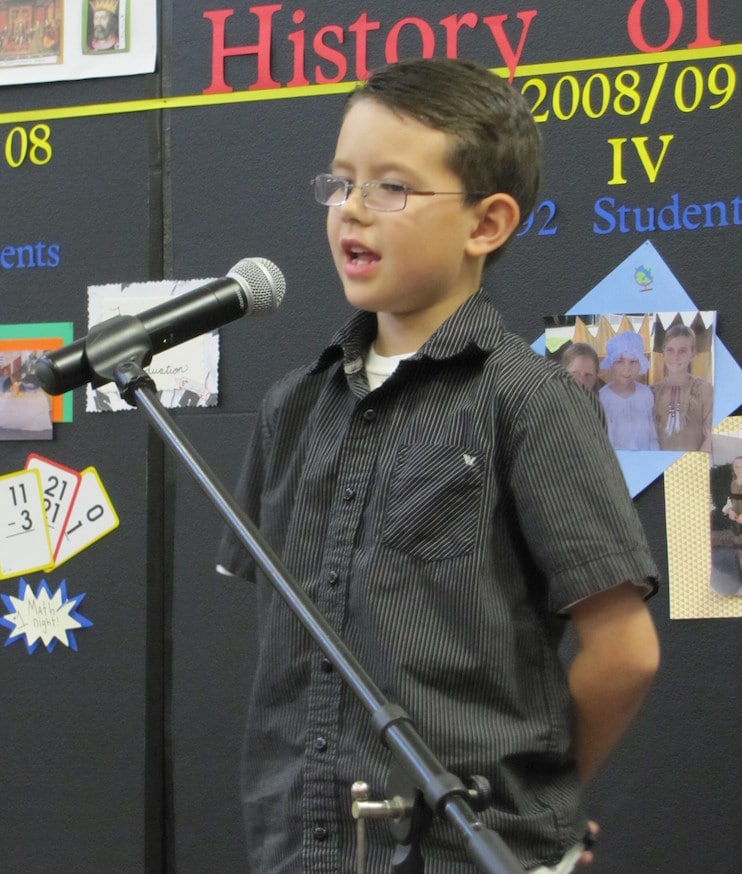 Last but not least, Recitation is another important hallmark of Classical Education and the Grammar Stage in particular. Young children are well suited to memorize poetry, important names and dates from history, and speeches and documents that are a part of their studies. As students memorize rich, beautiful language, their minds are filled with thoughts they are yet too young to think. They are inspired by the words of great thinkers and make connections we cannot guide them to any other way. The lovely language then flows forth as they learn to write and it infiltrates their speech as well. Confidence and poise are developed effortlessly through consistent practice in front of peers.
Last but not least, Recitation is another important hallmark of Classical Education and the Grammar Stage in particular. Young children are well suited to memorize poetry, important names and dates from history, and speeches and documents that are a part of their studies. As students memorize rich, beautiful language, their minds are filled with thoughts they are yet too young to think. They are inspired by the words of great thinkers and make connections we cannot guide them to any other way. The lovely language then flows forth as they learn to write and it infiltrates their speech as well. Confidence and poise are developed effortlessly through consistent practice in front of peers.
The grammar stage is a time for memorization, careful practice, thoughtful listening and presentation to classmates. Our students are enriched by the great minds of the past as they are developing the great minds of the future.
Here are links to the other posts in this series:












